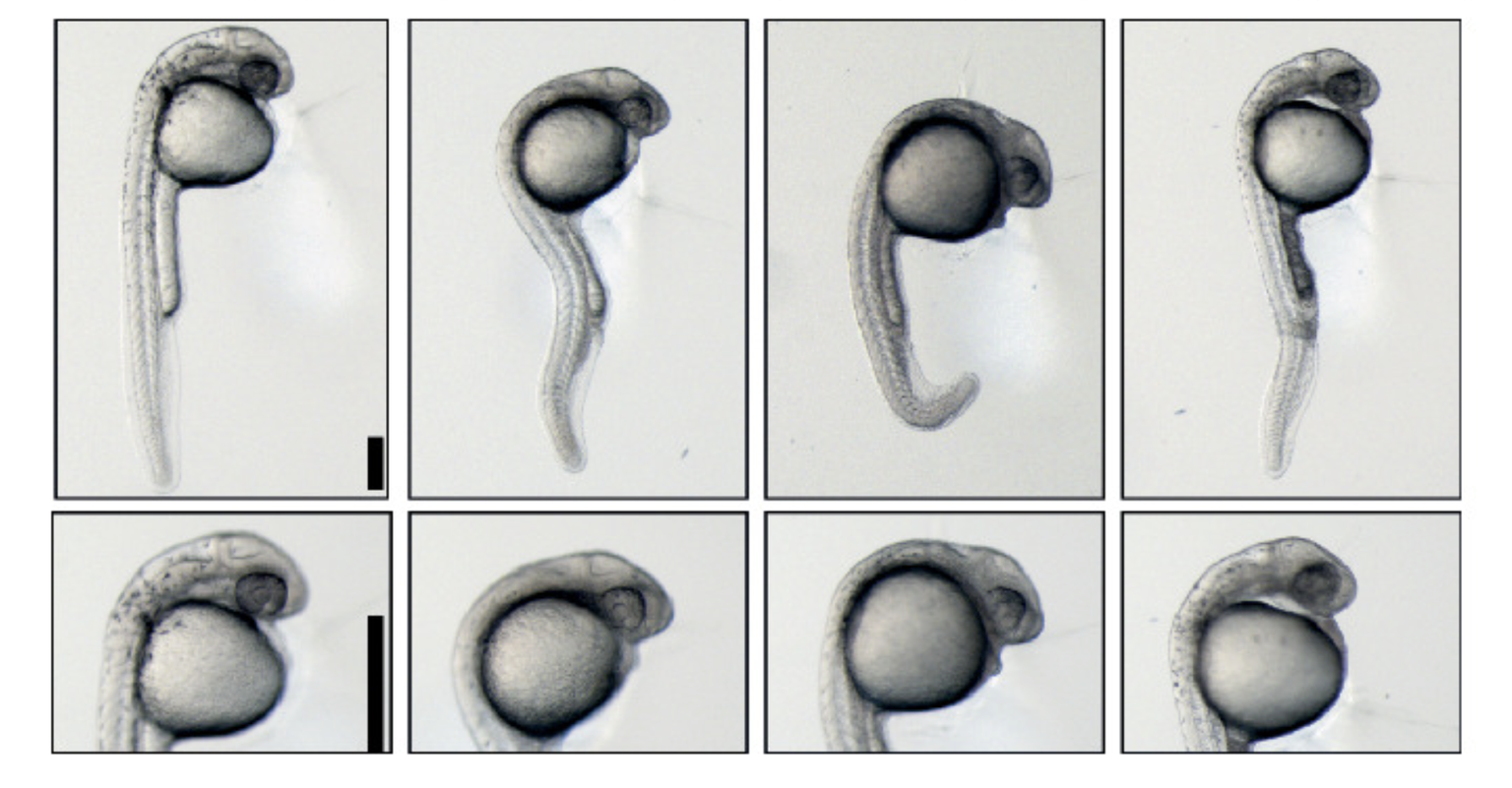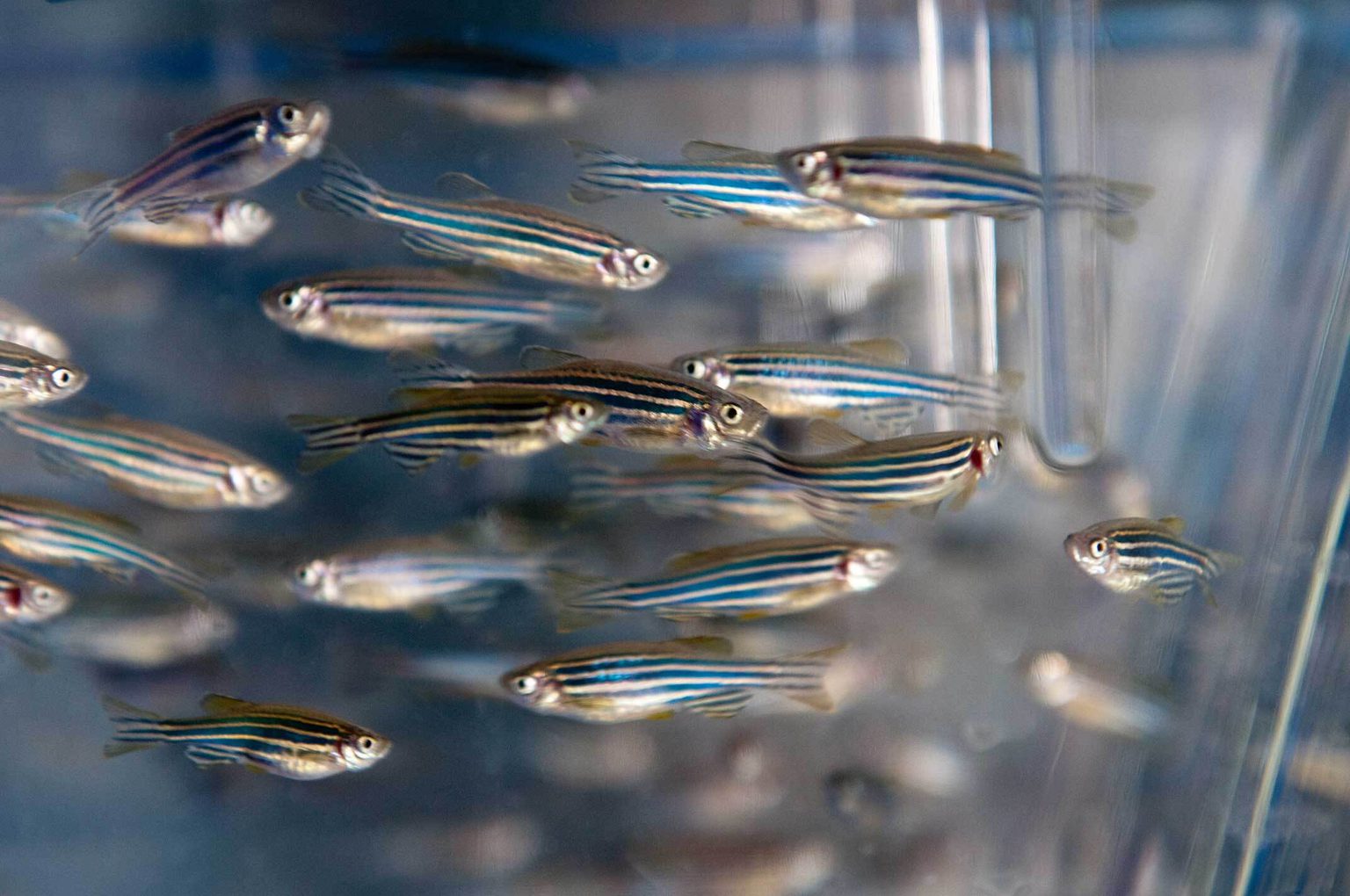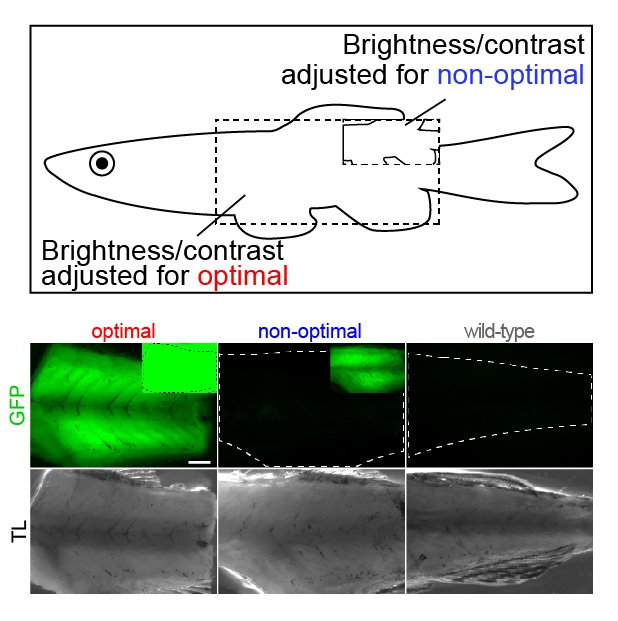News

18 November 2025
Decoding early development
Stowers Associate Investigator Ariel Bazzini, Ph.D., discusses a collaboration that uncovered a new mechanism guiding the earliest steps of life.
Read Article
News
New study sheds light on how factors regulating embryonic gene activity extend later in life

Zebrafish at the Stowers Institute.
By Rachel Scanza, Ph.D.
More than 50 years ago, scientists cracked the genetic code to reveal how a gene’s DNA sequence specifies the amino acids of its corresponding protein. Today, however, scientists realize there are additional layers in the code that regulate gene activity. New research from the Stowers Institute for Medical Research explored a part of DNA made up of three-letter “words” called codons, which determine specific amino acids. This study reveals how a gene’s “word choice” can influence its activity in various tissues and at different life stages, potentially impacting advances in biotechnology and human health.
A recent study published in G3: Genes, Genomes, Genetics on October 24, 2024, from the lab of Associate Investigator Ariel Bazzini, Ph.D., examined the effect different codon compositions have on gene messages and protein levels—biologists call this codon optimality—in adolescent zebrafish tissues. This discovery is the first time to show that this gene-regulating process occurs beyond early developmental stages, or embryogenesis. It may help scientists better design synthetic genes for potential medical treatments.
“Our results are exciting because they show the strength of this regulatory mechanism to influence gene activity,” said Bazzini. “In addition, codon composition has a huge impact on how many proteins our bodies make under normal conditions.”
A gene’s codon composition can influence the stability of its RNA molecules—the messages that deliver a gene’s instructions to protein production machinery in the cell. Since there are around three times as many codons as amino acids, the same amino acid can be specified by multiple, or synonymous codons. And like synonyms, the codon choice for a given amino acid may have different implications.

Graphical illustration indicating the imaging region of skeletal muscle (top) and fluorescent microscopy images showing optimal and non-optimal reporter gene expression compared to control zebrafish (bottom). GFP is green fluorescent protein, and TL is transmitted light. Brightness was adjusted to show differences in GFP reporter expression. Scale bar = 150mm.
Codons that increase RNA stability are deemed “optimal” while those that increase RNA degradation are “non-optimal,” which can have dramatic impacts on resulting protein concentrations. Previous studies have primarily focused on codon optimality just after fertilization, the highly dynamic developmental stage where the newly formed embryo must stop relying on RNA and proteins supplied by its parents and must begin manufacturing its own.
Now, the research team led by Michelle DeVore, Ph.D., has examined the regulatory effect of codon composition in 8-day-old zebrafish, a more stable phase of development. The team designed “reporters,” or genes with a fluorescent tag and nearly identical DNA sequences, shifted by a single DNA “letter.” This shift changes the three-letter codons, resulting in reporters enriched in either optimal or non-optimal codons.
Using a molecular technique called real-time qPCR and an imaging technique called fluorescent microscopy, the team quantified RNA levels and visualized protein levels in zebrafish strains with optimal and non-optimal reporter genes. Zebrafish with optimal reporter genes had significant increases in RNA levels and even larger changes in protein concentrations. This suggests that codon optimality greatly influences both gene activity and subsequent protein production at far later developmental time points, expanding on the importance of this regulatory pathway.
“The results were striking. Codon optimality helps explain a hidden layer of genetic control,” said Bazzini. “This could be used to design better therapies, especially for diseases where protein production needs to be finely tuned.”
Going forward, the framework established in this research can be extended to target the effects of specific codons as well as to examine how codon optimality governs gene activity across an organism’s lifespan. Understanding more about how codon choice affects gene activity could help scientists devise synthetic genes as treatments for diseases that need fast protein production, like cancer.
This work was funded by the National Institute of General Medical Sciences of the National Institutes of Health (NIH) (award: R01GM136849), the NIH Office of the Director (award: R21OD034161), and institutional support from the Stowers Institute for Medical Research. The content is solely the responsibility of the authors and does not necessarily represent the official views of the NIH.
News

18 November 2025
Stowers Associate Investigator Ariel Bazzini, Ph.D., discusses a collaboration that uncovered a new mechanism guiding the earliest steps of life.
Read Article
In The News

13 August 2025
Horacio Martín Pallarés, Ph.D., in the lab of Ariel Bazzini, Ph.D., a 2010 Pew Fellow, plans to bring his research on viral epidemics to aid his home country of Argentina.
Read Article
News
12 August 2025
Horacio Martín Pallarés, Ph.D., in the lab of Ariel Bazzini, Ph.D., a 2010 Pew Fellow, plans to bring his research on viral epidemics to aid his home country of Argentina
Read Article